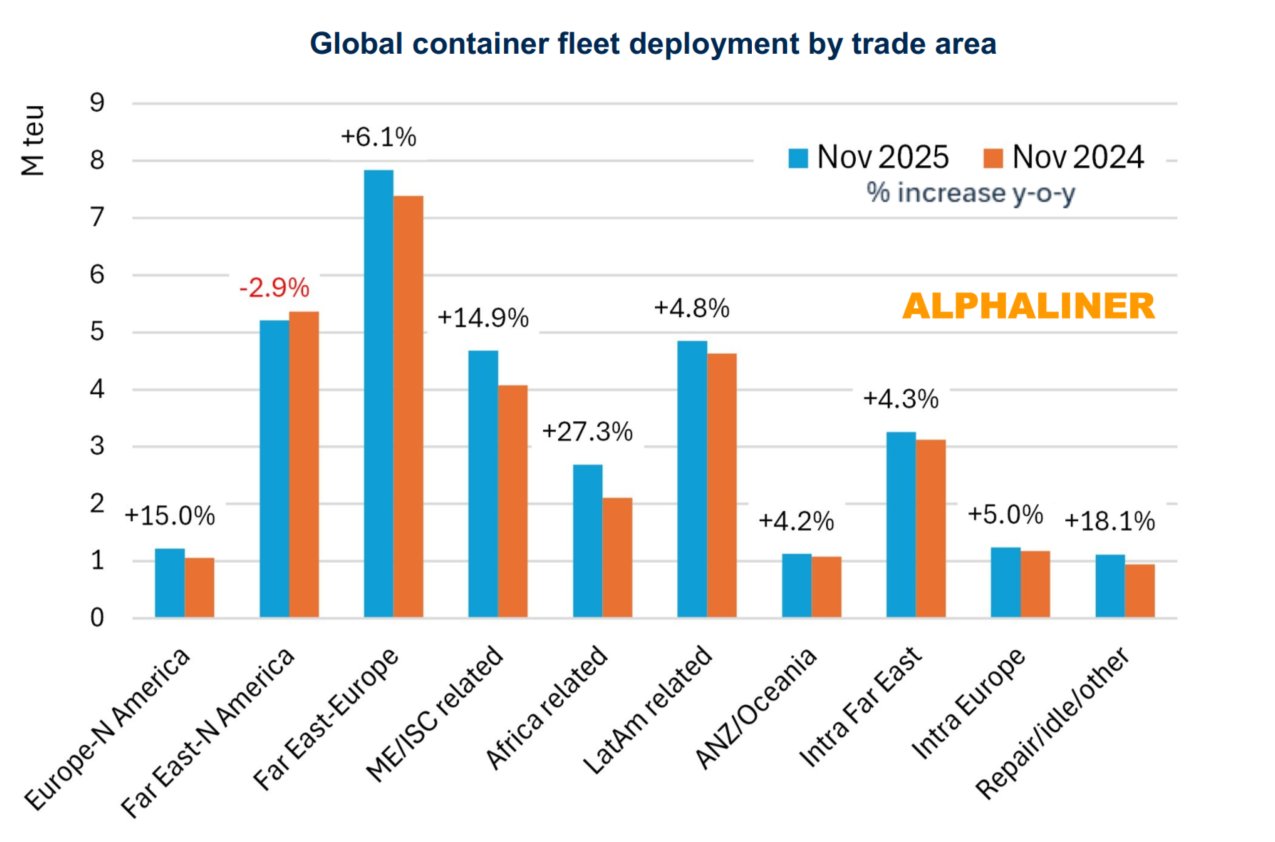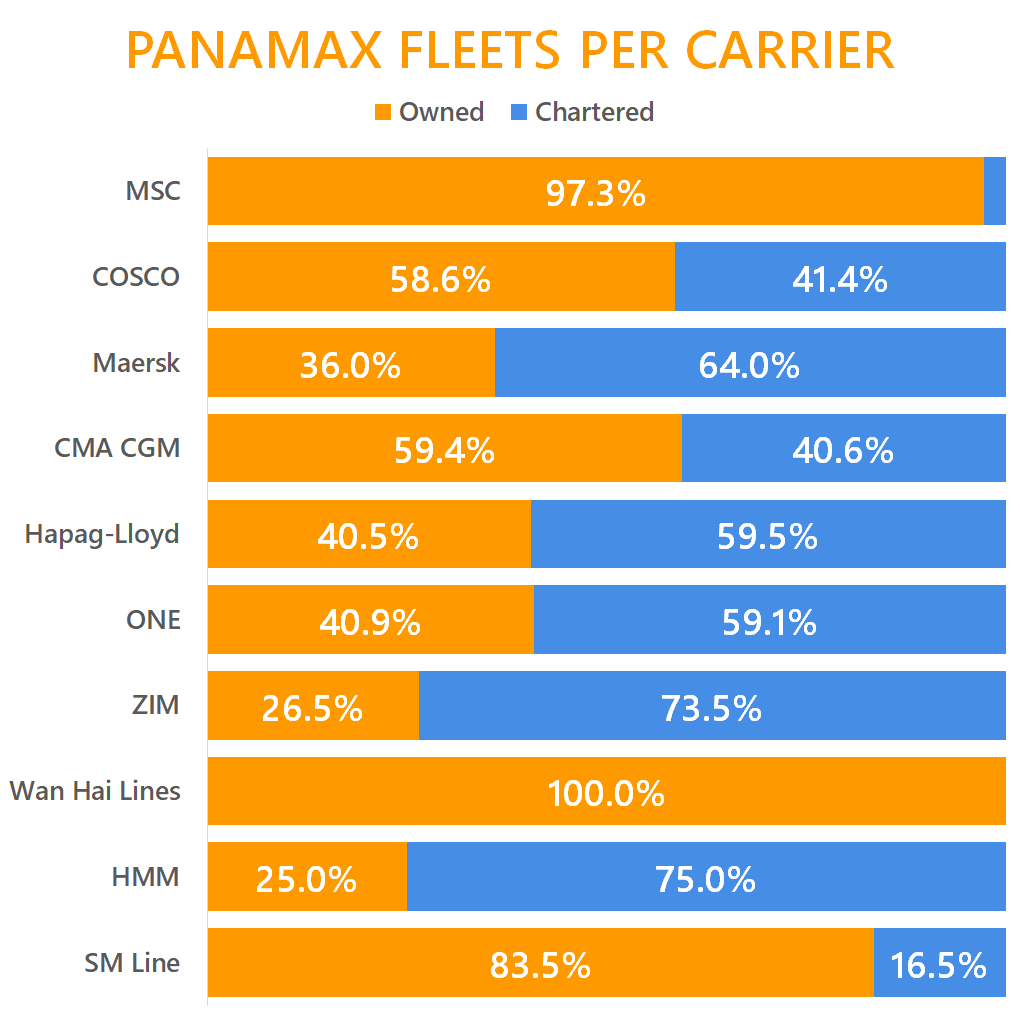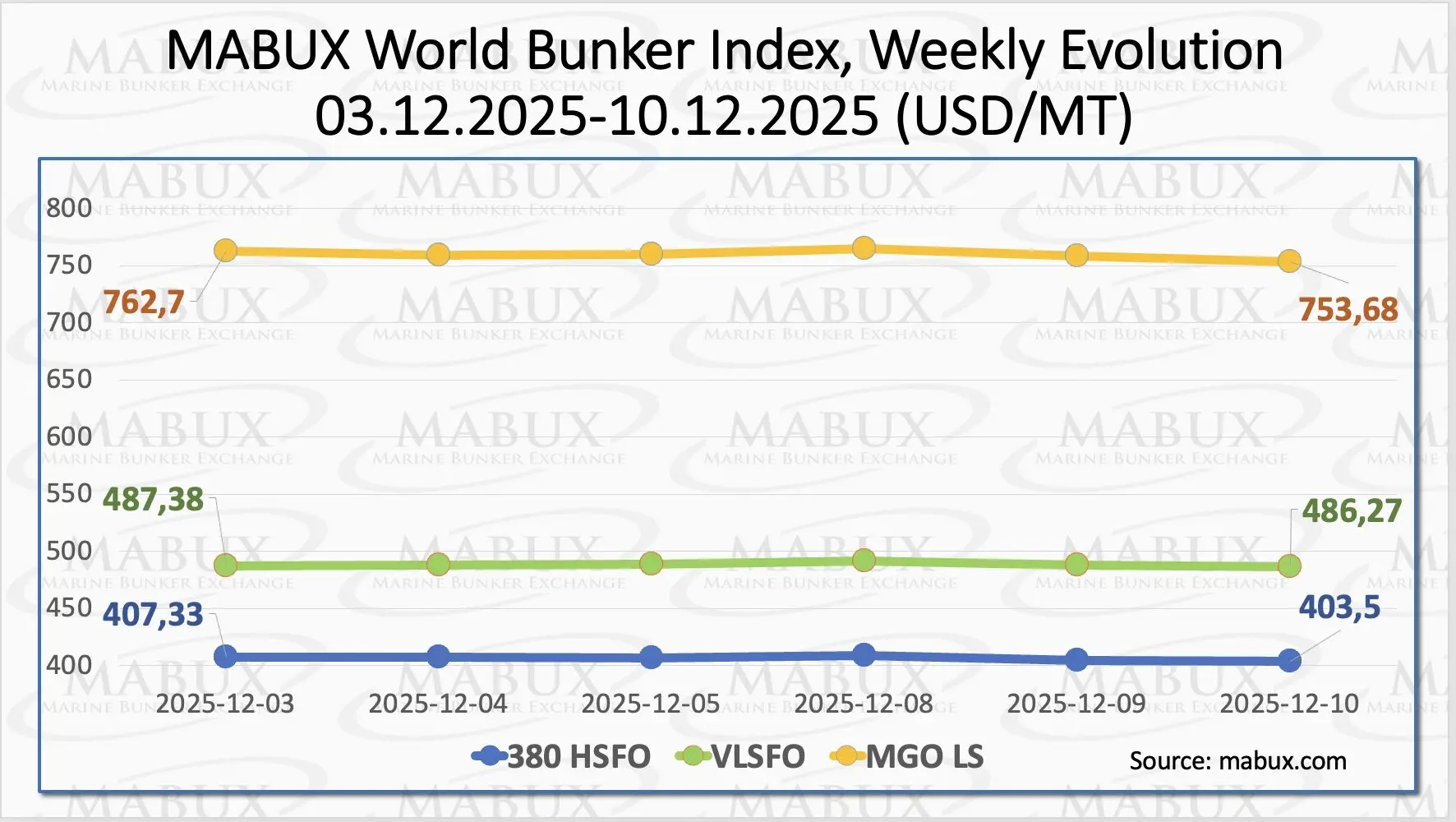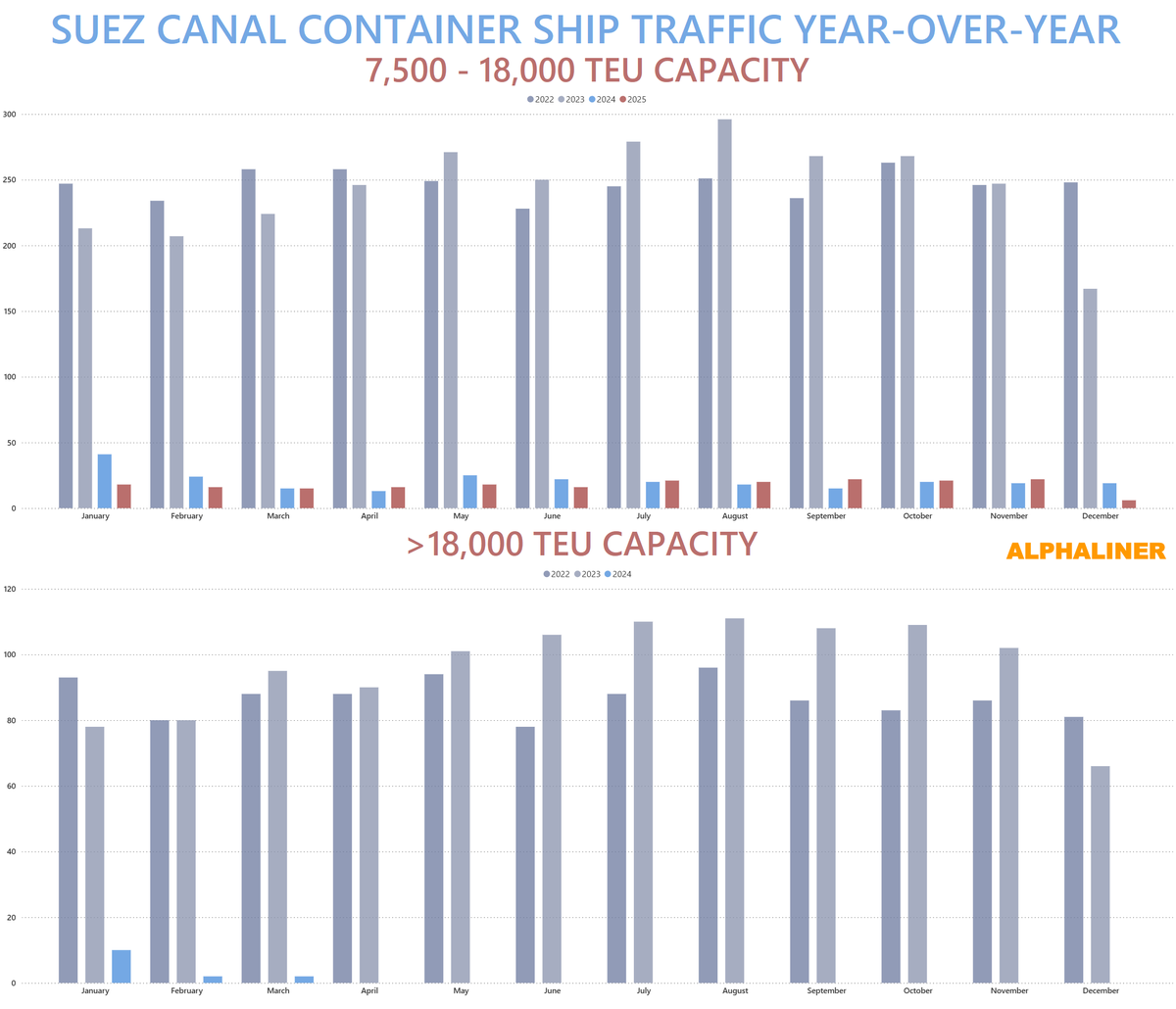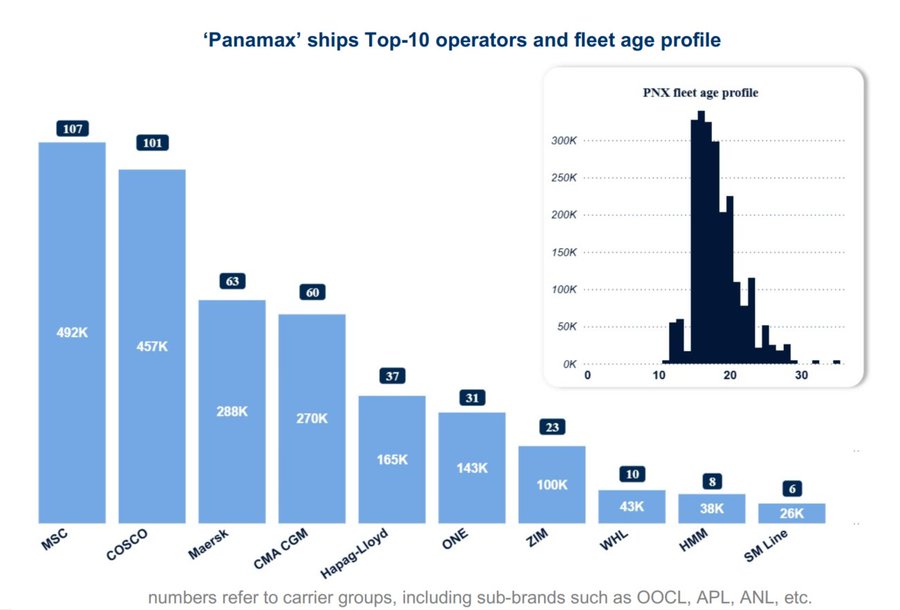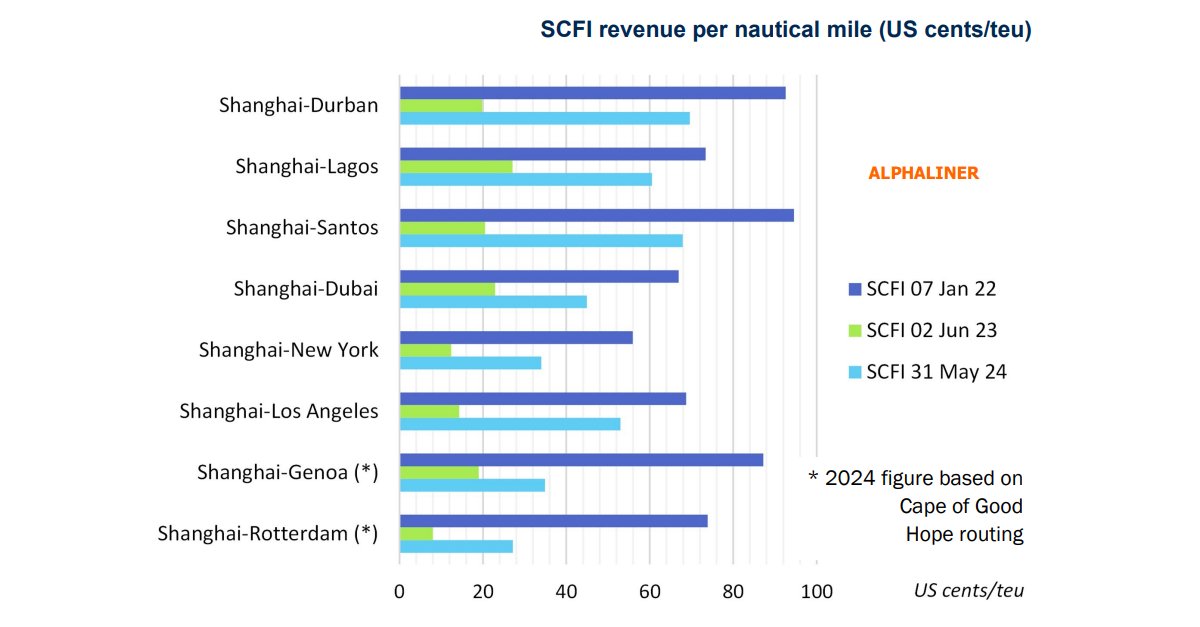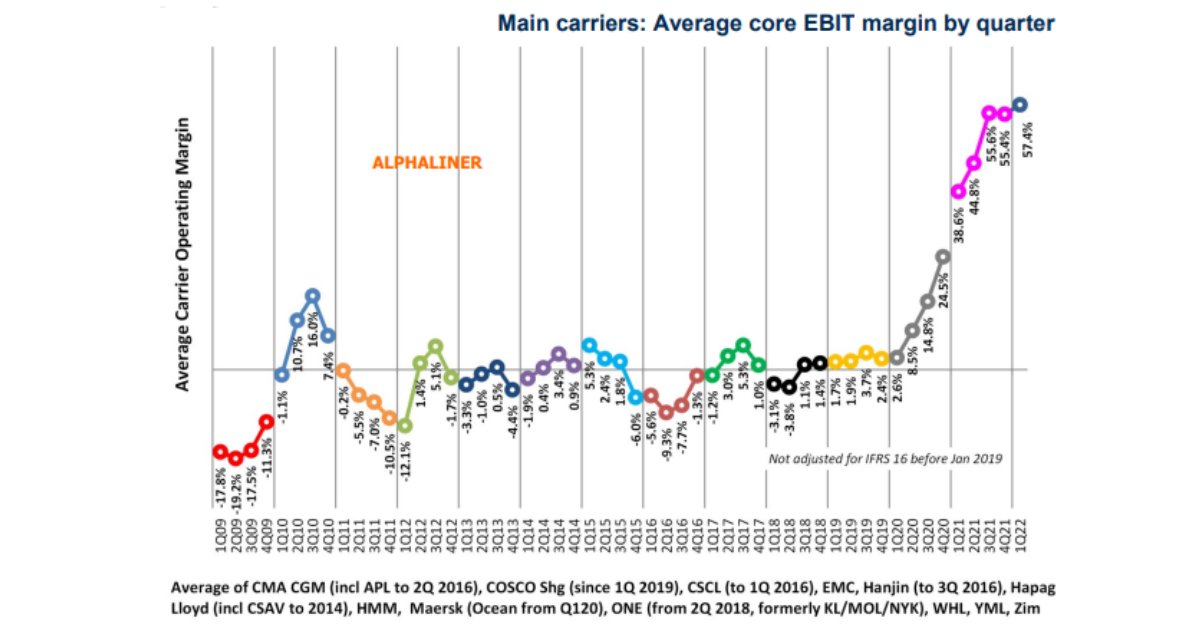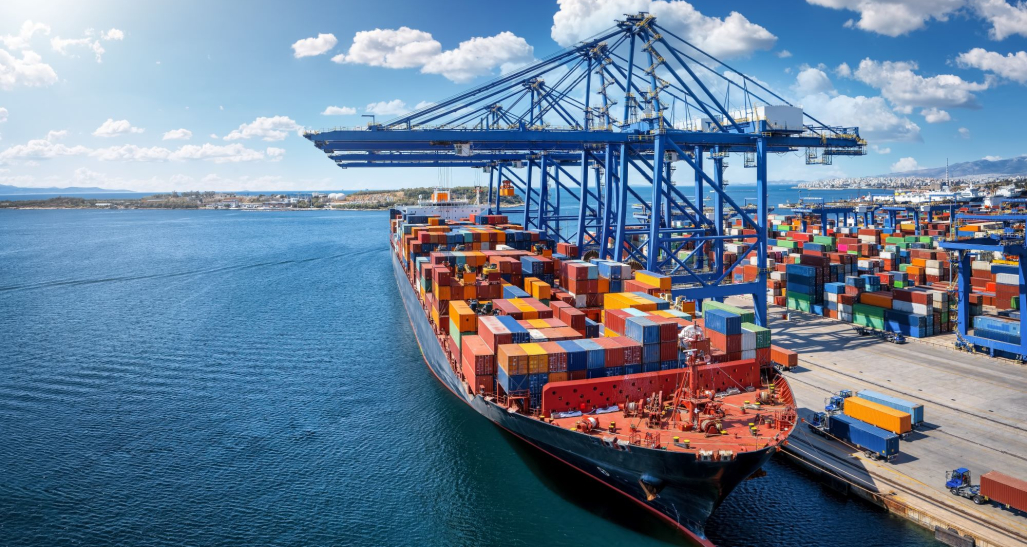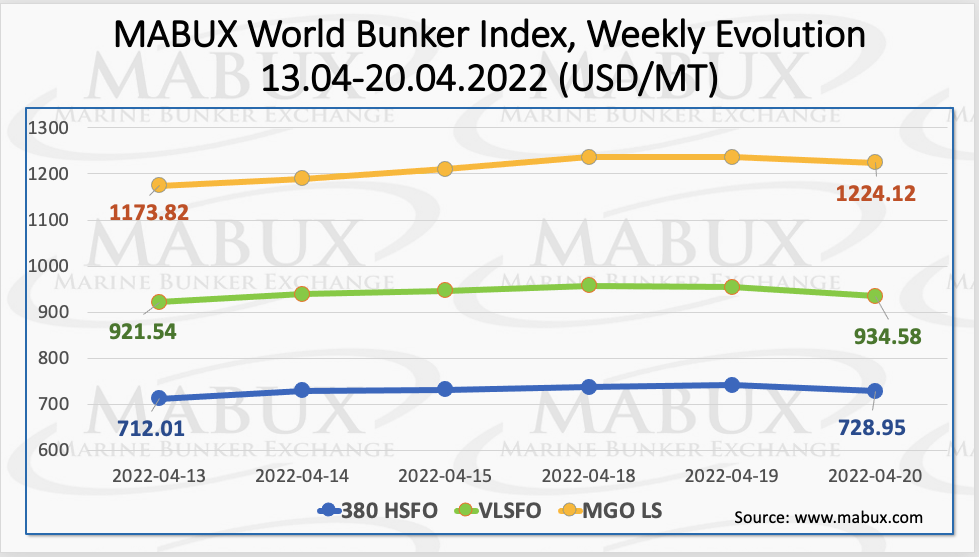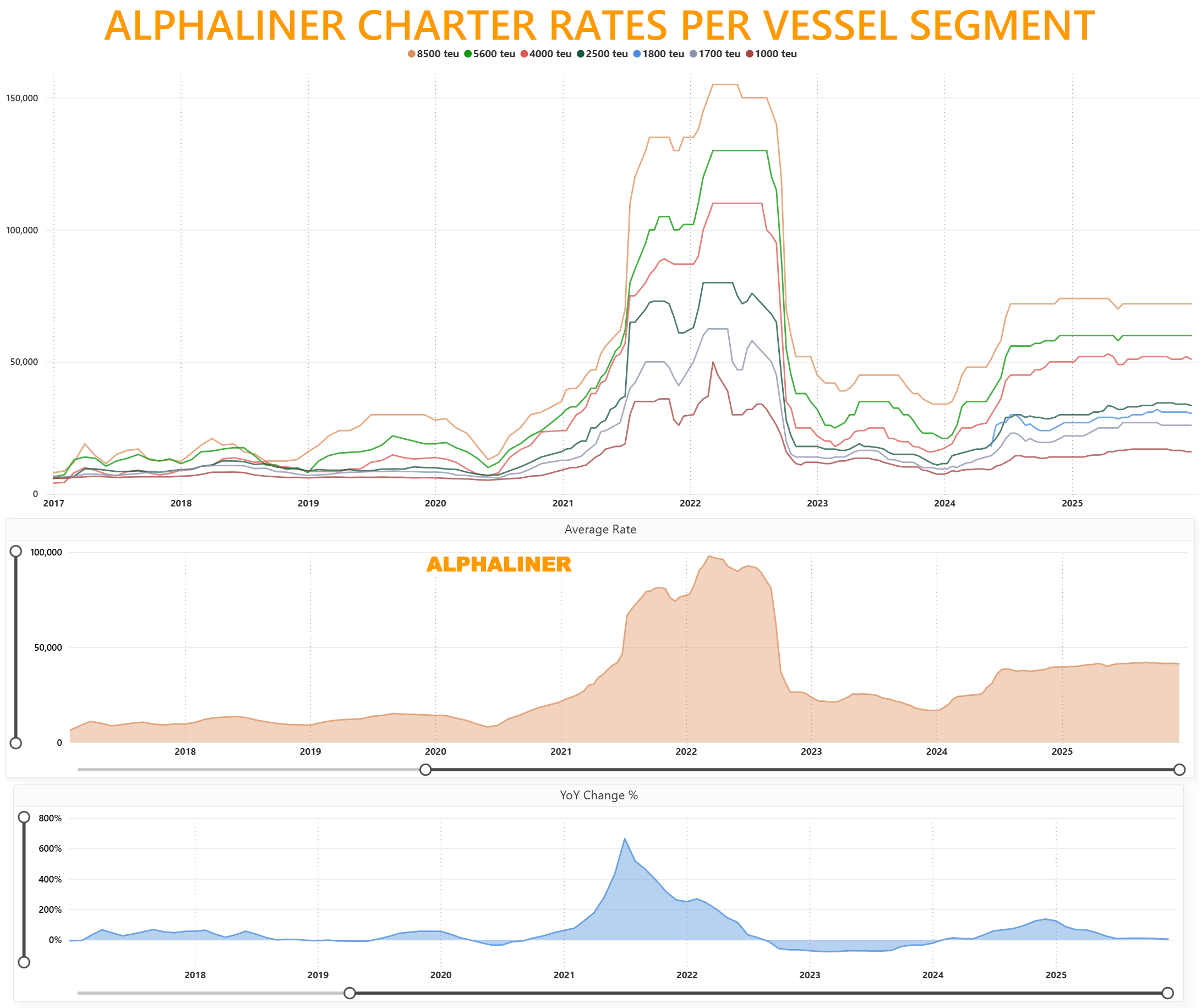
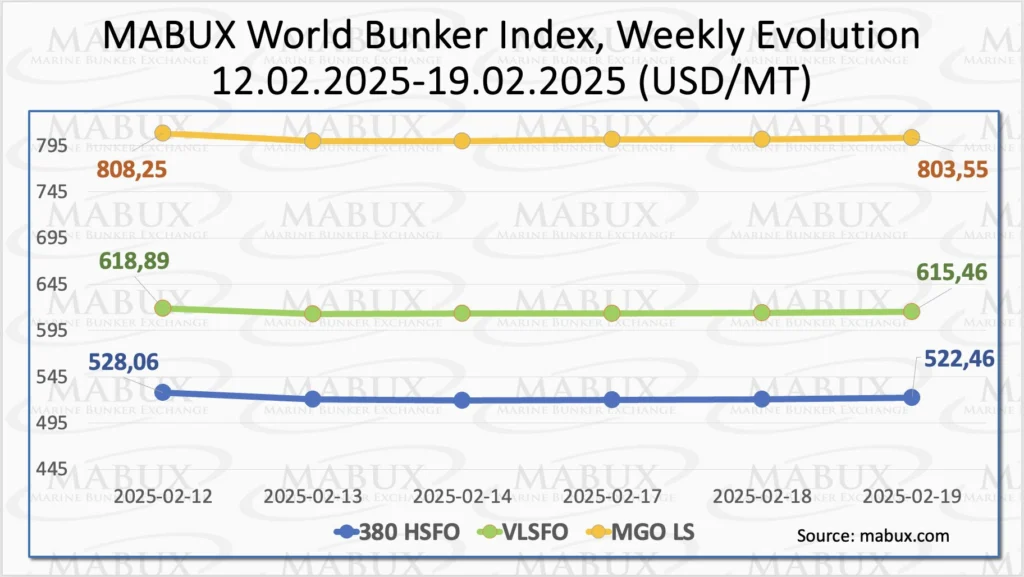
During the 08th week, the MABUX global bunker indices experienced a moderate decline. The 380 HSFO index fell by 5.60 USD, from 528.06 USD/MT to 522.46 USD/MT. The VLSFO index dropped by 3.43 USD, reaching 615.46 USD/MT compared to 618.89 USD/MT the previous week.
The MGO index decreased by 4.70 USD, from 808.25 USD/MT to 803.55 USD/MT, approaching the 800 USD mark. As of the time of writing, no sustainable trends were observed in the global bunker market.
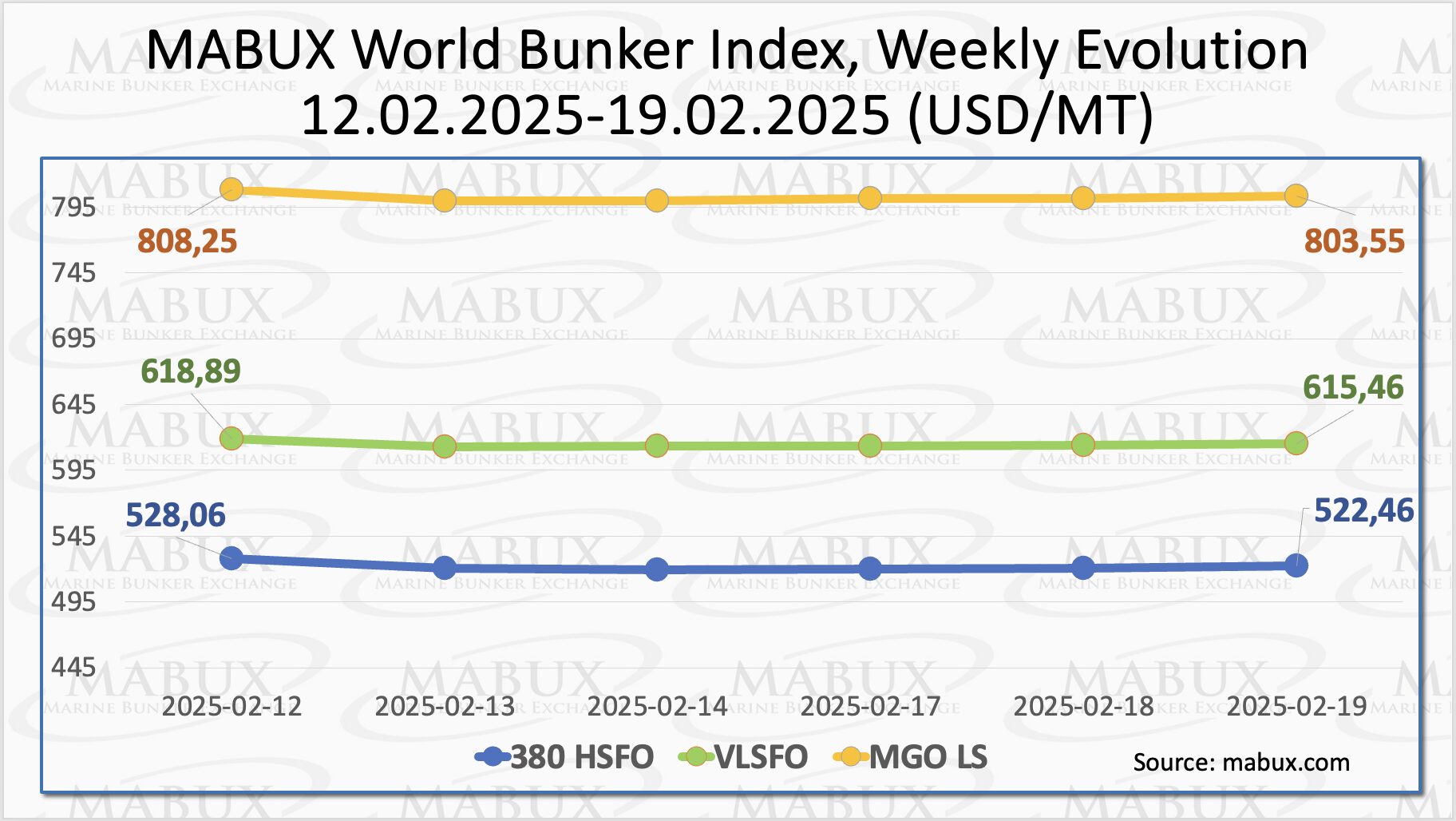 The MABUX Global Scrubber Spread (SS) – the price difference between 380 HSFO and VLSFO – continued to grow moderately, increasing by $2.17 from $90.83 to $93.00, gradually approaching the $100.00 breakeven mark. The weekly average widened by $3.18.
The MABUX Global Scrubber Spread (SS) – the price difference between 380 HSFO and VLSFO – continued to grow moderately, increasing by $2.17 from $90.83 to $93.00, gradually approaching the $100.00 breakeven mark. The weekly average widened by $3.18.
In Rotterdam, the SS Spread decreased by $2.00, from $75.00 to $73.00, remaining comfortably below the $100.00 threshold. The weekly average in the port fell by $12.50. In Singapore, the 380 HSFO/VLSFO spread rose by $8.00, from $62.00 to $70.00, while the weekly average stayed steady at $67.50.
Overall, the Global SS Spread showed no significant changes, with regional indices fluctuating slightly in different directions, staying well below the $100.00 mark. Next week, the SS Spread is expected to continue fluctuating without a clear trend. For more details, visit the Differentials section at mabux.com.
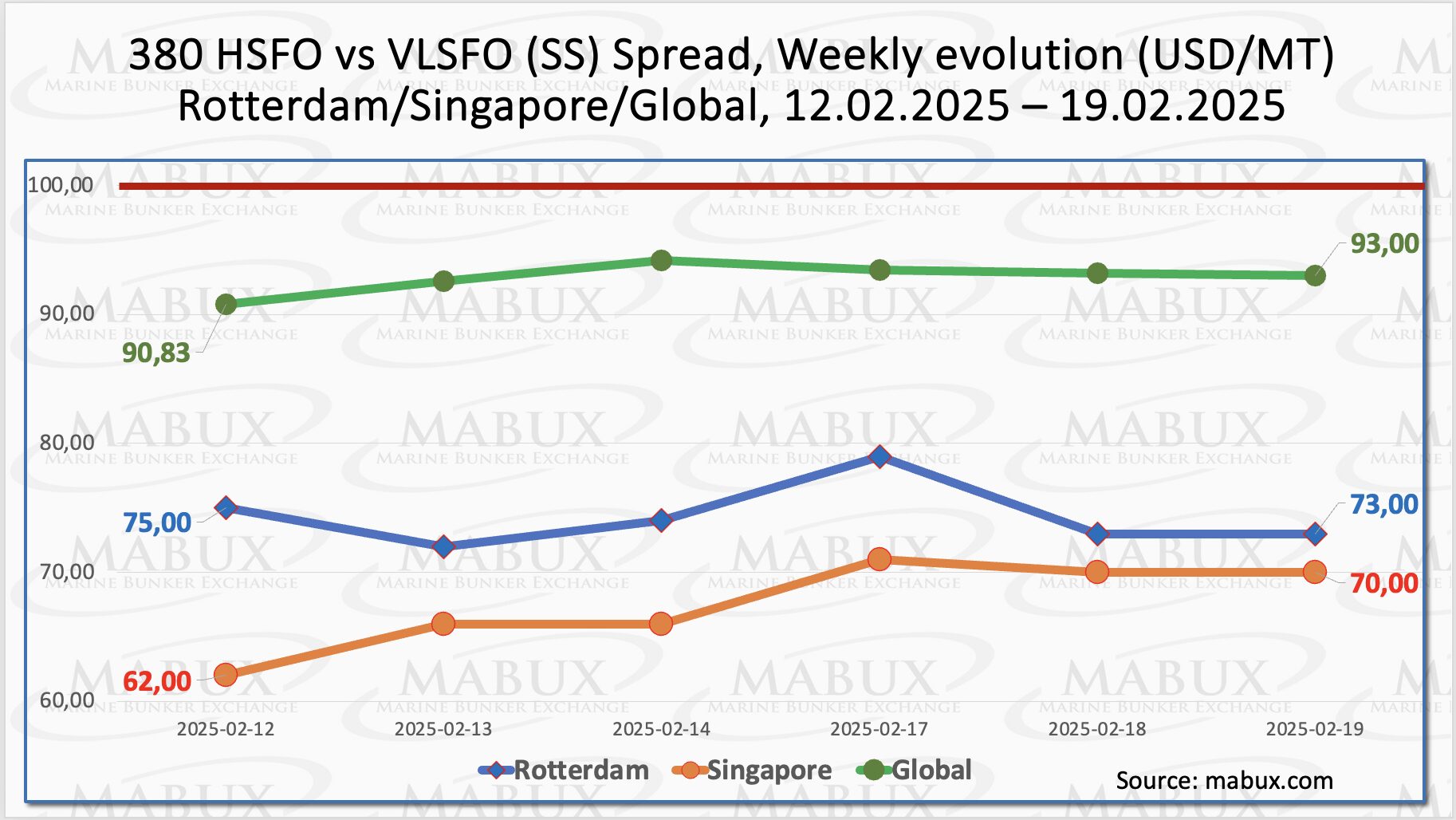 Global LNG imports surged to a 12-month high of 38.12 million tonnes in January. Europe continues diverting LNG cargoes from Australia and Oman while European natural gas futures climb. Meantime, European natural gas futures prices have slightly declined amid the start of negotiations over Ukraine.
Global LNG imports surged to a 12-month high of 38.12 million tonnes in January. Europe continues diverting LNG cargoes from Australia and Oman while European natural gas futures climb. Meantime, European natural gas futures prices have slightly declined amid the start of negotiations over Ukraine.
However, the potential for an upward trend in gas indices remains due to rapid reserve depletion caused by colder weather, decreased wind power generation from low wind speeds, and the cessation of Russian gas imports via Ukraine. As of February 18, European regional storage facilities were at 43.37% capacity, down 4.52% from the previous week and 27.96% from the beginning of the year.
This is significantly lower than last year’s level of 67% at the same stage and the 10-year average of 51% for this period. Gas withdrawals continue. By the end of week 08, the European gas benchmark TTF decreased by 7.851 euros/MWh, dropping below the 50.00 euros/MWh mark to 49.915 euros/MWh from 57.766 euros/MWh the previous week.
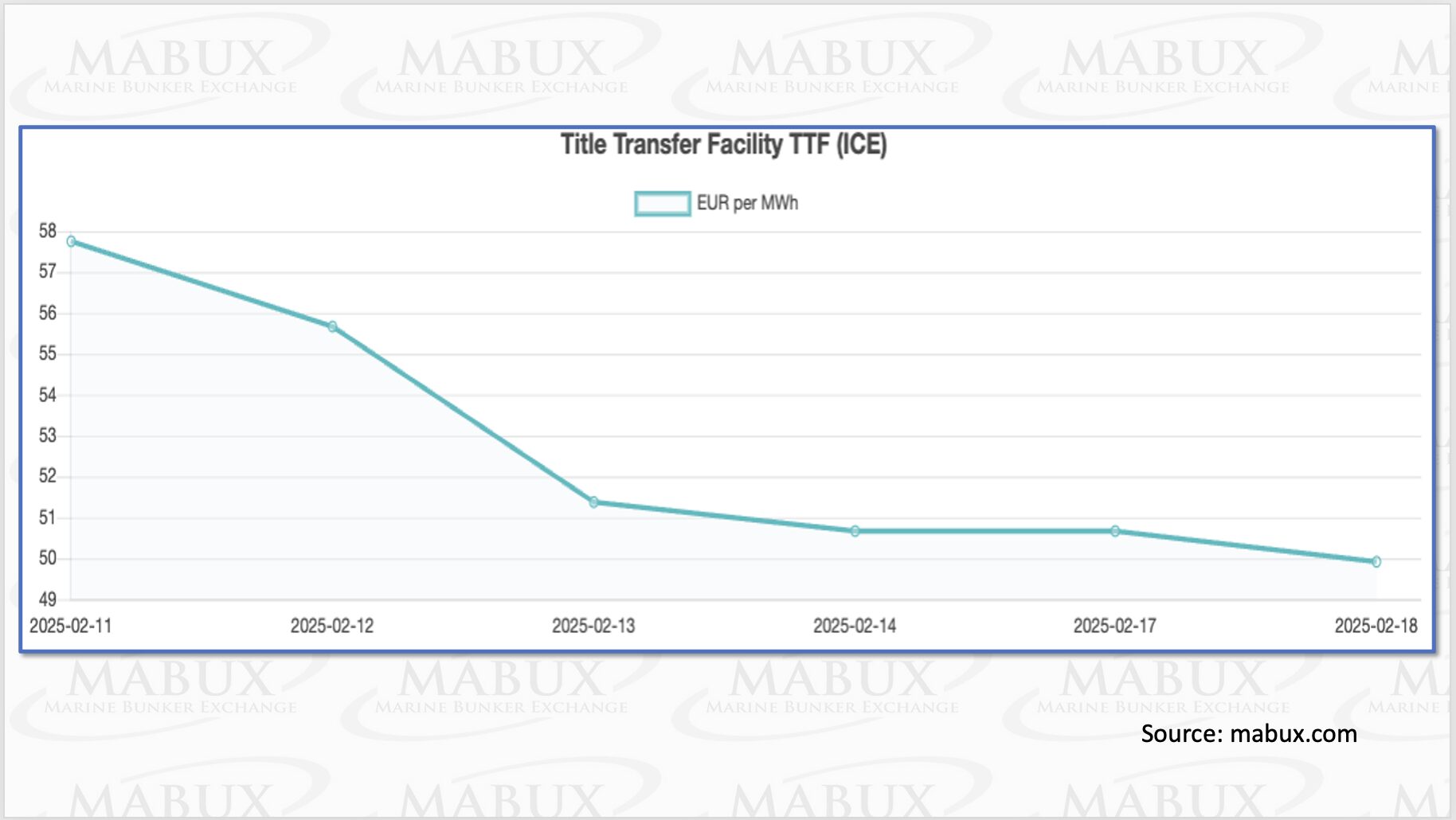 The price of LNG as a bunker fuel in the port of Sines (Portugal) decreased by $87 by the end of the week compared to the previous week, reaching $1,003 per metric ton (MT) on February 17.
The price of LNG as a bunker fuel in the port of Sines (Portugal) decreased by $87 by the end of the week compared to the previous week, reaching $1,003 per metric ton (MT) on February 17.
Meanwhile, the price gap between LNG and conventional fuel also narrowed on the same day, with Marine Gas Oil Low Sulfur (MGO LS) being $227 cheaper than LNG, compared to a $317 difference the previous week. MGO LS was quoted at $776/MT in the port of Sines on February 17. More details can be found in the LNG Bunkering section on mabux.com.
 During Week 08, the MABUX Market Differential Index (MDI)— which compares market bunker prices (MBP Index) to the MABUX digital bunker benchmark (DBP Index)—showed mixed trends across the four major hubs: Rotterdam, Singapore, Fujairah, and Houston.
During Week 08, the MABUX Market Differential Index (MDI)— which compares market bunker prices (MBP Index) to the MABUX digital bunker benchmark (DBP Index)—showed mixed trends across the four major hubs: Rotterdam, Singapore, Fujairah, and Houston.
 The balance of overvalued and undervalued ports remained unchanged throughout the week, with the trend toward bunker fuel undervaluation persisting. No significant shifts in this balance are expected next week.
The balance of overvalued and undervalued ports remained unchanged throughout the week, with the trend toward bunker fuel undervaluation persisting. No significant shifts in this balance are expected next week.
Further insights on the correlation between market prices and the MABUX digital benchmark are available in the Digital Bunker Prices section of mabux.com.
Bunker fuel sales (including alternative fuels) in Singapore totaled 4,461,710 metric tonnes (mt) last month, down 9.1% from 4,906,100 mt in January 2024. Sales also declined 6.9% from the 4,790,030 mt recorded in December 2024.
Very low sulphur fuel oil (VLSFO) sales fell 15% year-on-year (y-o-y) to 2,431,300 mt from 2,861,100 mt, while high sulphur fuel oil (HSFO) sales dipped slightly to 1,655,300 mt from 1,658,800 mt in January 2024. Among other fuels, low-sulphur marine gas oil (MGO LS) sales dropped 19.1% y-o-y to 256,500 mt, while marine gas oil (MGO) sales plunged 77%.
For the first time since October 2024, Singapore recorded 900 tonnes of SECA-compliant ultra-low-sulphur fuel oil (ULSFO) sales. Bio-blended fuel sales surged in 2024, with bio-VLSFO deliveries doubling y-o-y to 92,000 tonnes in January.
Additionally, 16,000 tonnes of bio-HSFO were sold, compared to none in January 2024. After record volumes in 2024, LNG sales as a marine fuel started the year weakly, with just 10,400 tonnes delivered in January 2025—the lowest monthly total on record. No methanol sales were recorded.
We anticipate that the ongoing conflict resolution process in Ukraine could set the stage for a continued downward trend in bunker fuel prices next week.
Source: MABUX

